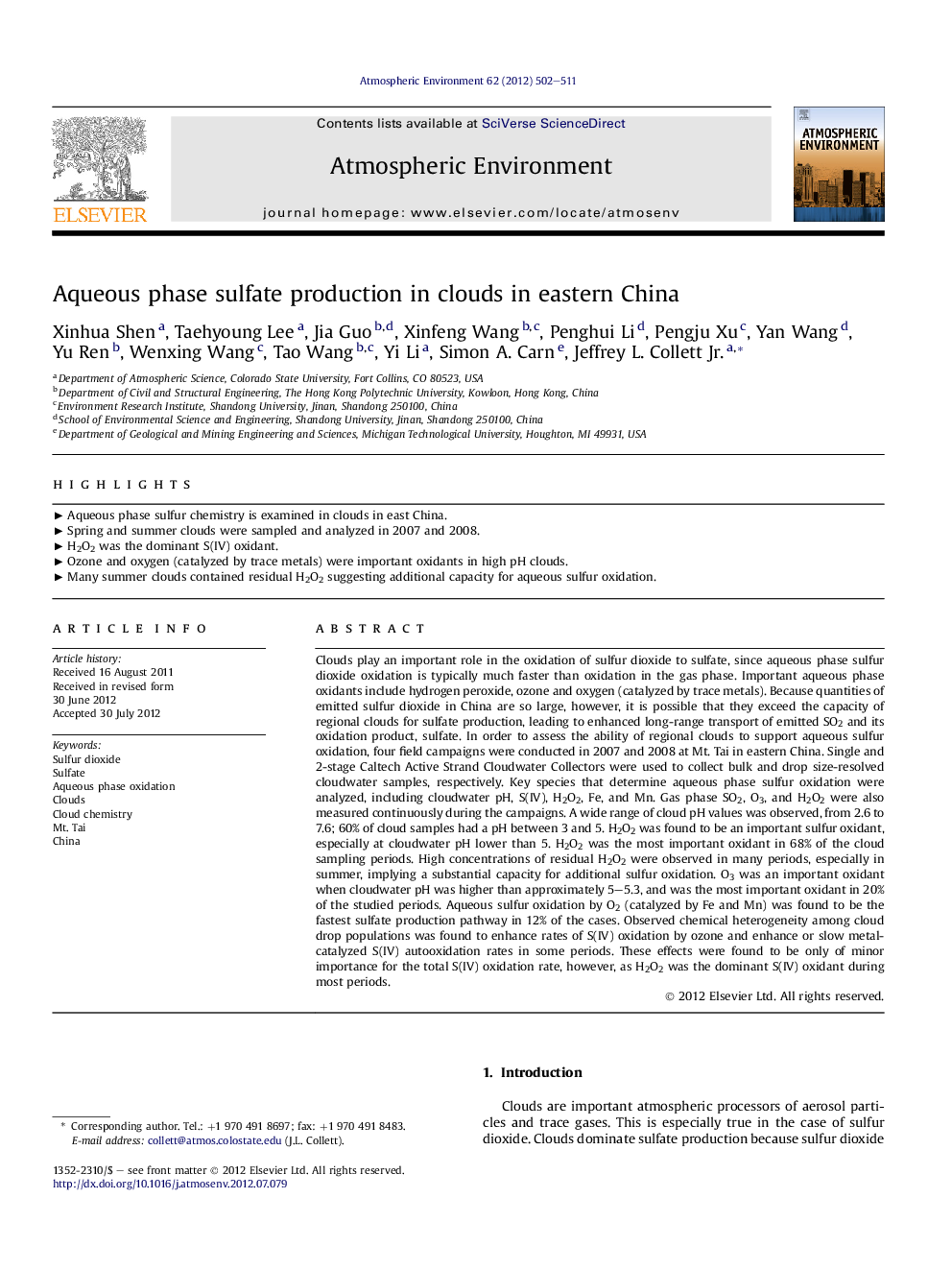| کد مقاله | کد نشریه | سال انتشار | مقاله انگلیسی | نسخه تمام متن |
|---|---|---|---|---|
| 4438679 | 1620409 | 2012 | 10 صفحه PDF | دانلود رایگان |

Clouds play an important role in the oxidation of sulfur dioxide to sulfate, since aqueous phase sulfur dioxide oxidation is typically much faster than oxidation in the gas phase. Important aqueous phase oxidants include hydrogen peroxide, ozone and oxygen (catalyzed by trace metals). Because quantities of emitted sulfur dioxide in China are so large, however, it is possible that they exceed the capacity of regional clouds for sulfate production, leading to enhanced long-range transport of emitted SO2 and its oxidation product, sulfate. In order to assess the ability of regional clouds to support aqueous sulfur oxidation, four field campaigns were conducted in 2007 and 2008 at Mt. Tai in eastern China. Single and 2-stage Caltech Active Strand Cloudwater Collectors were used to collect bulk and drop size-resolved cloudwater samples, respectively. Key species that determine aqueous phase sulfur oxidation were analyzed, including cloudwater pH, S(IV), H2O2, Fe, and Mn. Gas phase SO2, O3, and H2O2 were also measured continuously during the campaigns. A wide range of cloud pH values was observed, from 2.6 to 7.6; 60% of cloud samples had a pH between 3 and 5. H2O2 was found to be an important sulfur oxidant, especially at cloudwater pH lower than 5. H2O2 was the most important oxidant in 68% of the cloud sampling periods. High concentrations of residual H2O2 were observed in many periods, especially in summer, implying a substantial capacity for additional sulfur oxidation. O3 was an important oxidant when cloudwater pH was higher than approximately 5–5.3, and was the most important oxidant in 20% of the studied periods. Aqueous sulfur oxidation by O2 (catalyzed by Fe and Mn) was found to be the fastest sulfate production pathway in 12% of the cases. Observed chemical heterogeneity among cloud drop populations was found to enhance rates of S(IV) oxidation by ozone and enhance or slow metal-catalyzed S(IV) autooxidation rates in some periods. These effects were found to be only of minor importance for the total S(IV) oxidation rate, however, as H2O2 was the dominant S(IV) oxidant during most periods.
► Aqueous phase sulfur chemistry is examined in clouds in east China.
► Spring and summer clouds were sampled and analyzed in 2007 and 2008.
► H2O2 was the dominant S(IV) oxidant.
► Ozone and oxygen (catalyzed by trace metals) were important oxidants in high pH clouds.
► Many summer clouds contained residual H2O2 suggesting additional capacity for aqueous sulfur oxidation.
Journal: Atmospheric Environment - Volume 62, December 2012, Pages 502–511